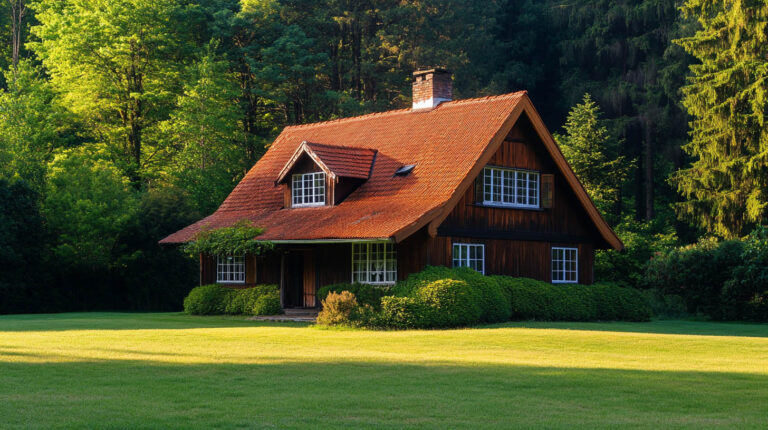
Blog
Roof Leaks 101: Causes, Detection, and Prevention
Roof leaks can be a homeowner’s worst nightmare, causing extensive damage if not addressed promptly. Understanding the causes, warning signs, and prevention methods can help you avoid costly repairs. At Avenue Roofing, we emphasize the importance of proactive roof maintenance to catch leaks early before they become a significant issue.

Common Causes of Roof Leaks
Weather Damage
Weather is one of the primary causes of roof leaks. Florida, with its unpredictable weather patterns, puts significant strain on roofing systems. Factors like heavy rain, hail, and high winds can gradually wear down your roof’s materials, leading to cracks or holes. Severe storms and hurricanes are especially harmful, with high winds displacing shingles or damaging roof structures.
Interesting Fact: After a severe storm, roof inspections increase by 30%, highlighting the critical need for post-storm maintenance.
Neglect and Poor Maintenance
Roof leaks can often be traced back to negligence or poor maintenance. Homeowners who fail to regularly inspect their roofs may overlook small issues like missing shingles or damaged flashing, which can worsen over time. Ignoring minor problems increases the risk of larger, costlier repairs down the line.
Equipment-Related Damage
Roofs with installed HVAC systems, satellite dishes, or other equipment are more prone to leaks due to the penetrations made by screws or nails. Over time, these areas can weaken, allowing water to seep through. Regular inspections are necessary to ensure the integrity of these installations.
Common Areas Where Roof Leaks Occur
While roof leaks can occur anywhere, certain areas are more susceptible:
- Around Chimneys: Chimney flashing can deteriorate, allowing water to seep in where the roof meets the chimney.
- Roof Valleys: These are areas where two roof planes intersect. Water tends to pool here, increasing the risk of leaks if not properly sealed.
- Roof Penetrations: Areas around vents, skylights, and exhaust pipes are also vulnerable to leaks due to the gaps that exist between these installations and the roofing material.
- Attic Spaces: Leaks can sometimes originate from your attic, especially if condensation forms and isn’t properly ventilated. This water can pool on your ceiling, mimicking a roof leak.
Detecting Roof Leaks: What to Watch For
Water Stains
One of the most obvious signs of a roof leak is water stains on your ceiling or walls. These brown or yellow discolorations are a clear indication that water is getting through your roof. Check corners and along the edges where walls meet the ceiling, as these areas are prone to leaks.
Damp or Moldy Odors
If you notice a persistent damp or musty smell in your home, it could be a sign of moisture buildup in your attic or ceiling. Mold thrives in moist environments, so any unusual odors should prompt you to check for potential leaks.
Drips or Water Puddles
While these may seem like obvious signs, not all roof leaks will result in noticeable drips. However, if you do notice water pooling in your home, especially after rain, it’s crucial to address the issue immediately to avoid further damage.
Preventing Roof Leaks
Regular Inspections
Regular roof inspections are key to preventing leaks. Ideally, inspections should be carried out twice annually—once in the spring and again in the fall. Additionally, it’s important to check your roof after any severe weather event to catch potential damage early.
Did You Know? Regular roof inspections can increase your roof’s lifespan by 15-20 years by catching problems early.
Maintain Gutters
Blocked gutters can cause water to accumulate and flow beneath your roof’s shingles, resulting in potential leaks. Regularly clearing gutters of leaves and debris ensures water drains correctly, helping to avoid these moisture issues.
Repair Damaged Shingles and Flashing
Addressing damaged or missing shingles as soon as possible is key to preventing leaks. Similarly, ensuring that your roof’s flashing (the metal strips around chimneys, vents, and other roof penetrations) is intact will help keep water out.
FAQs:
1. What are the most common causes of roof leaks? Weather damage, neglect, and equipment-related damage are the most common causes of roof leaks.
2. How can I tell if my roof is leaking? Look for water stains on your ceiling, musty odors, or visible drips and water puddles in your home after rain.
3. Can I prevent roof leaks with regular maintenance? Yes, regular roof inspections and maintenance, such as repairing damaged shingles and keeping gutters clear, can help prevent leaks.
4. Are roof leaks covered by insurance? In many cases, roof leaks caused by storm damage may be covered by homeowner’s insurance, but it’s important to review your policy or consult your insurer.
Conclusion: Proactive Leak Prevention
Understanding the causes and signs of roof leaks is the first step in protecting your home from water damage. Regular maintenance, quick repairs, and inspections after severe weather can prevent minor issues from becoming costly problems. If you suspect a roof leak, don’t wait—contact Avenue Roofing for professional guidance and repairs.
To find out how proper attic ventilation can extend the life of your roof, click here.



